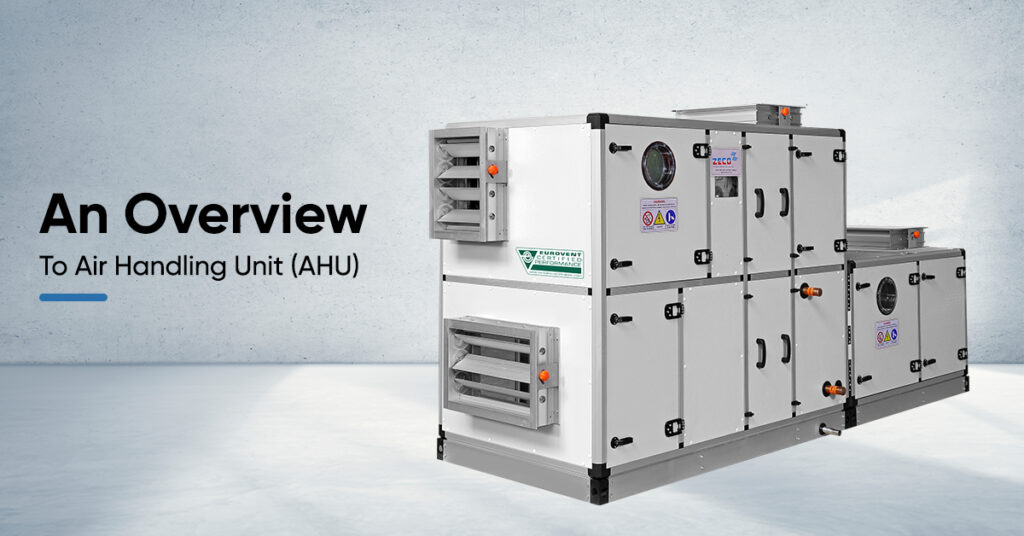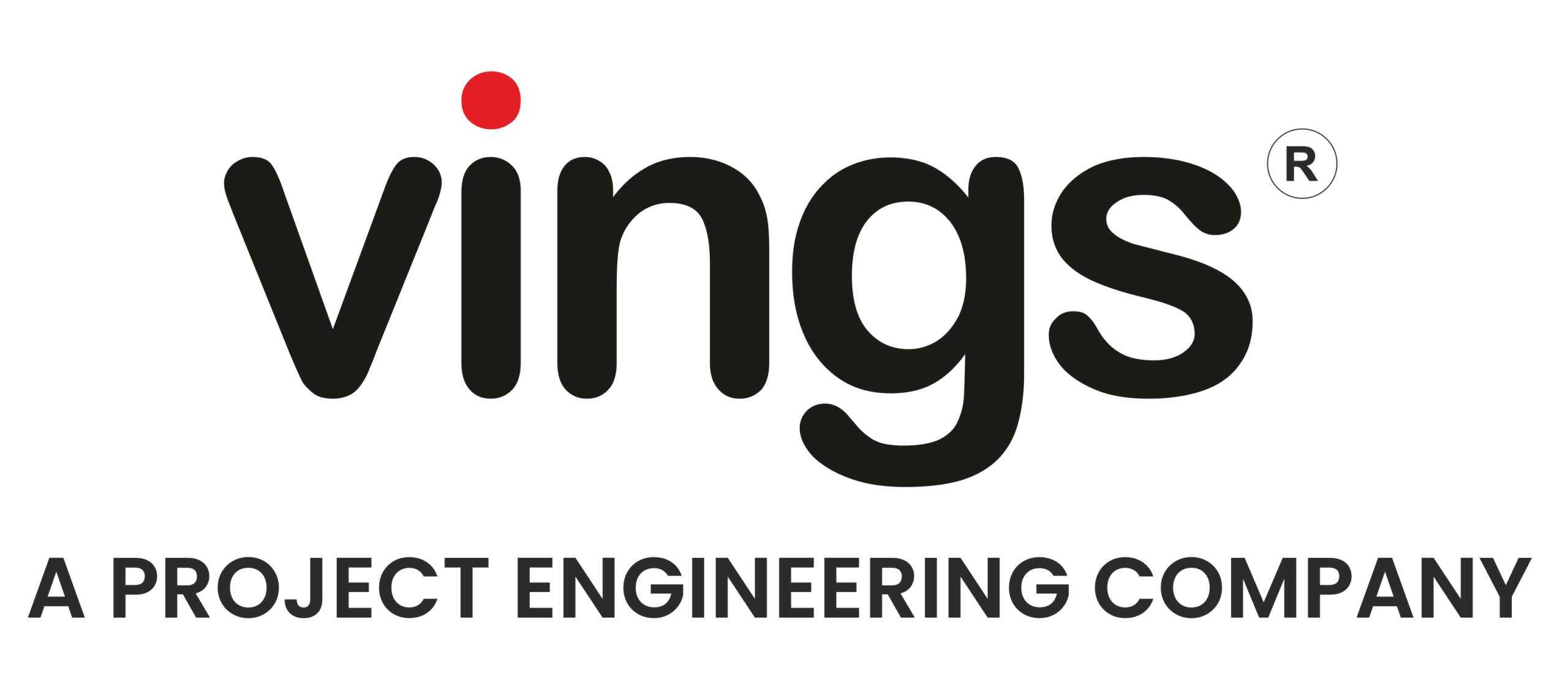
Introduction to Air Handling Units (AHUs):
Everything You Need to Know
As a homeowner, business owner, or HVAC professional, you may have heard about an air handling unit or AHU. But what is an AHU, and how does it fit into an HVAC system? As an essential component of HVAC systems, the Air Handling Unit (AHU) plays a crucial role in temperature control and ensuring optimal indoor air quality (IAQ). In this blog, we’ll discuss everything you need to know about air handling units, their principle of operation, types, purpose, capacity, cost, lifespan, and more.
What is an Air Handling Unit (AHU)?
Air Handling Unit is a critical component in a heating, ventilation, and air conditioning (HVAC) system. The AHU is responsible for conditioning and circulating air throughout a building or space. An AHU typically consists of a housing or cabinet that contains a blower or fan, heating or cooling elements (such as a coil or heat exchanger), air filters, and dampers to control the airflow. The AHU is connected to ductwork that distributes conditioned air to various areas of the building or space. The AHU may also include components such as humidifiers, dehumidifiers, or air purification systems depending on the specific needs of the building or space.
Principle of an Air Handling Unit (AHU)
The principle behind an AHU is relatively straightforward. The air handler draws in air from outside or the return duct. It passes through a series of filters that remove particulate matter or impurities. After that, the air is heated or cooled to the desired temperature by passing overheating or cooling coils. Finally, the conditioned air is distributed throughout the building via ductwork, and the cycle repeats.
SEE HOW AHU'S WORK?
An Air Handling Unit (AHU) is a vital component of an HVAC system, responsible for circulating and conditioning air within a building.
Types of Air Handling Unit's
Primarily, there are two types of air handling units (AHUs) utilized for regulating airflow in HVAC systems: the ‘blow-through’ and the ‘draw-through’ AHUs. The blow-through AHU comprises a fan that pushes the air through the mixing box, cooling coil, and filters whereas a ‘draw-through’AHUs pull the air.
AHUs can be classified based on their orientation, which includes vertical, horizontal, ceiling-suspended, or ground-mounted AHUs.
Based on the type of space, there are two types of AHUs – Packaged and modular units. Packaged units are typically used in smaller buildings, while modular units are commonly found in larger commercial or industrial applications.

FAQ's
Brief list of FAQs. Is an Air Handling Unit the Same as an HVAC?
While AHUs are an essential component of an HVAC system, they are not the same thing. HVAC stands for heating, ventilation, and air conditioning, and it encompasses a range of systems and components that work together to maintain comfortable indoor temperatures and air quality. AHUs are just one part of the HVAC puzzle.
What is AHU Capacity?
The capacity of an AHU is typically measured in cubic feet per minute (CFM) and refers to the volume of air that the unit can circulate in a minute. Generally, the CFM of AHUs ranges from 600 to 1,00,000. It depends on the size of the building and the number of occupants.
Do AHUs Have a Filter?
Yes, all AHUs come equipped with filters to remove particulate matter and other impurities from the air. These filters include a pre-filter, a fine filter, a HEPA filter, a carbon filter, and a chemical filter. The type of filter used will depend on the specific requirements and air quality standards.
Difference between AHU & FCU
An AHU is responsible for circulating and conditioning the air in an entire building. A Fan Coil Unit (FCU) is a smaller, self-contained unit that regulates the temperature in a single room or area. FCUs are often used in hotels, hospitals, and other large buildings where different areas require different levels of heating or cooling.
Is the Air Handler a Part of the AC Unit?
Yes, the air handler is an integral part of an AC unit. The AC unit includes an outdoor compressor & an indoor air handler unit. The outdoor unit contains the compressor and condenser, while the indoor unit contains the evaporator coil, blower, and other components.
Air Handler Cost
The cost of an air handler will depend on a range of factors, including the unit’s size (CFM requirement), the filtration level, the static pressure requirement, and the type of heating or cooling elements used. To know the actual price of an AHU unit
How long does an air handler last?
The lifespan of an air handler will depend on several factors, including the quality of the unit, the level of maintenance it receives, and the operating conditions of the HVAC system. Typically, a well-maintained AHU can last anywhere from 10 to 15 years, although some units may last longer with proper care. Regular maintenance of the AHU is essential to ensure that it operates efficiently. It includes replacing filters regularly, checking and adjusting dampers, cleaning coils, and ensuring fan operation correctly.
Where can we install AHU'S?
AHUs can be installed either inside or outside a building, depending on the specific needs of the HVAC system. In some cases, the AHU can be installed outside the building to free up interior space and reduce noise levels. However, in many cases, the AHU is installed inside the building, typically in a mechanical room or basement. It allows for easier access to the unit for maintenance, and repair and better control of the environment within the building.
In summation, understanding the importance of Air Handling Units (AHUs) in an HVAC system can help you create a comfortable and healthy indoor environment. By regularly maintaining your AHU, you can ensure it lasts for its expected lifespan and operates efficiently.

